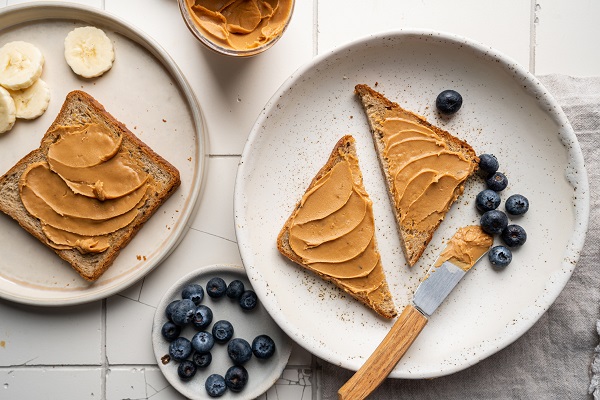This article originally appeared in Live Better magazine. Enjoy the full edition here.
When I was 20, I don’t remember ever informing a restaurant about dietary requirements for our table. Ten years later and it’s a very different story. Now whenever my friends and I dine out together, we rattle off a list of dietary requirements as long as a grocery list: tree nut allergies, peanut allergies, one aversion to garlic and onion, no dairy… Not to mention I’m pescatarian, Emma’s vegetarian, and Jack’s vegan. It made me wonder, are we becoming less food tolerant as we get older?
According to Lauren Atkins, Advanced Accredited Practising Dietitian and Co-Director at OnCore Nutrition, we might be. Lauren explains how our gut is exposed to different elements over time. So, while food allergies are typically diagnosed in childhood, due in part to their more severe symptoms, certain food intolerances can go undetected until much later in life.
“As we get older, we subject our gut to more and more elements—good and bad,” says Lauren. “Whether that’s nutrition or diet related, alcohol, chemicals, stress, our lifestyle… There are so many different factors that play a role in defining our gut function.”
The idea that factors like lifestyle and stress can amplify or even trigger a new food intolerance might explain why my friends’ list of dietary requirements is longer in our 30s than it was just a decade ago.
“I’ve seen clients who, on reflection, realise their irritable bowel syndrome (IBS) symptoms may have commenced at the same time as some acute stress, trauma, or life changing event,” says Lauren. “We’ve got a different way of living today that perhaps positions us to be a little more sensitive to some of the processes that are happening in our gut. That can trigger new symptoms, or amplify and bring our awareness to symptoms that were always there.”
Allergy or intolerance: What’s the difference?
Allergies and intolerances are both types of food sensitivity which cause adverse effects in our bodies, but it’s important to understand the differences between them. A food allergy is an uncommon immune system reaction to a food, often presenting with immediate symptoms, such as a rash or swelling. In severe cases, an allergic reaction can cause anaphylaxis—a shock response which can be life-threatening.
Food intolerances, on the other hand, don’t interact with our immune systems. They’re an inability to digest certain foods without experiencing an adverse reaction, such as bloating or an upset stomach. These symptoms can be uncomfortable—and in some cases severe—but they’re generally not life-threatening.
In Australia, 1 in 10 infants and about 2 in 100 adults have a food allergy. Food intolerances are even more common, believed to affect about 25% of the population.
Gas and bloating aren’t necessarily your enemies
If you suspect a certain food is responsible for causing you any uncomfortable symptoms, Lauren says it’s important not to simply cut the food out of your diet altogether.
“What we don’t want to do is just put a band aid over something,” says Lauren. “There are certain compounds in foods that can create symptoms but are still very good quality foods. You don’t want to end up on a restrictive diet that becomes nutritionally deplete.”
Lauren singled out the humble chickpea as an example of a food inherently rich in prebiotic fibres and certain carbohydrates that innately create gas in our bowel. This isn’t, she explains, a bad thing.
“Remember, gas is normal, bloating is normal,” she says. “It’s a normal physiological process. In fact we should celebrate bloating in and of itself because it means you’re feeding your gut bacteria. But if it starts to cause you discomfort, or if it’s persistent or getting worse, it’s important to investigate that.”
How dietitians can help
The investigation looks a little like this: Lauren and the team at OnCore Nutrition conduct holistic assessments of their patients’ nutrition to look at what’s going on for each individual patient. The symptoms themselves can potentially reveal dietary triggers or culprits, but there are many other factors—such as lifestyle, medications, and genetics—that the team string together to make a comprehensive and personalised nutrition assessment.
“Our gut microbiome is as unique as our fingerprint,” says Lauren, “So it’s important that we don’t just follow a standardised path of treatment for everyone.”
“In a case where an elimination diet is warranted, we create a really sound understanding of a patient’s symptoms without any FODMAPs in their diet, and from there we systemically re-introduce groups of foods to see what their maximum tolerated dose is. The goal is to liberalise the diet as much as possible while keeping the individual comfortable and symptom free.”
Are some food intolerances avoidable?
To minimise your chances of developing a food intolerance, Lauren suggests eating a varied diet, minimising your intake of processed foods, and fuelling your gut bacteria with plenty of prebiotic fibre—foods like legumes and wholegrains.
When it comes to lifestyle, focus on your sleep hygiene, getting regular exercise and practicing mindfulness in whatever way feels right for you.
When to seek help
If you think you might be experiencing symptoms consistent with a food allergy or intolerance, it’s important to get a diagnosis from a qualified medical practitioner. Your GP should be able to provide you with advice and support, as well as a referral to a specialist if you need one.
If you have extras cover with Medibank, you may be able to claim benefits towards consultations with a dietitian, depending on your level of cover. Log in to My Medibank to check your cover, waiting periods and limits.
Food for thought
If you do require assistance or support with your diet and nutrition, it’s not just your gut that will thank you for seeking help.
“Ninety five per cent of the body’s serotonin (happy hormone) is stored in the gut,” says Lauren. “So we should certainly focus on loving our guts.”
Strategies for living with a food allergy or intolerance
- Educate your friends, family and colleagues
- Make a plan for dining out
- Inform the restaurant when you make your reservation
- Inform your waiter when you arrive
- Read the menu carefully
- Ask your waiter about cross contamination
- If you have a severe allergy, avoid eating food from a self-service area like a buffet
- If you have a severe allergy, always carry your Epipen®
- When grocery shopping, always read the food label
- Be mindful of bakeries, butchers and deli counters where food isn’t pre-packaged or labelled.
The 10 most common food allergens
- crustaceans
- eggs
- fish
- lupin
- milk
- peanuts
- sesame seeds
- soybeans
- tree nuts
- wheat
Food allergy symptoms
- low blood pressure, dizziness, faintness or collapse
- swelling of the lips or throat
- dry or itchy throat and tongue
- coughing and wheezing
- shortness of breath and a runny or blocked nose
- rashes or hives, plus itchy skin or eyes
- nausea
- diarrhoea
- vomiting
Common food intolerances
- lactose
- milk
- food additives
- sulphites
Food intolerance symptoms
- bloating
- upset stomach and bowels
- headaches and migraines
- wheezing
- runny nose
- hives
- generally feeling poorly

